Montclair is more than a town, it is a time capsule of architectural elegance and cultural evolution. In the rich tapestry of Montclair, it feels as if a green birdsong piano has been tuned to immortalize classic American and European stories. The Bellevue Theatre hosted silent films, the Montclair Hotel welcomed travelers, and Pine Street was filled with working-class families starting new lives. Montclair’s bucket brigades turned fire stations with the addition of motorized engines while its train stations changed the township from a backwater to suburb. Every building either present or not present tells the story of those who made it their home and builds their future. It is a window to the past of the town.
Architectural Icons of Upper Montclair: A Tudor Revival Legacy
Welcome to Bellevue Avenue. It is a tapestry of steep gabled roofs, elaborate brickwork, and one hundred years’ worth of montclairians living below the Tudor Revival. which was a brick house that had been gone for a century. When you step into Upper Montclair, it is not just all buildings but also a living chronicle of a town that still manages to keep up with the times but never hemmed in by progress. The flickering images on the screen from silent movies at the Bellevue Theatre and the reliability of services at the Tudor style of the post office all speak of change. At the end of the day, wherever they go or whatever names they take on or purposes they serve, they remain stitched into the very fabric of Montclair.
The Bellevue Theatre
The Bellevue Theatre opened in 1922 as a silent movie theatre, but it wasn’t just any silent film theatre, it was an architectural statement. With a steep gabled roof, decorative half-timbering, and brickwork, Bellevue Theatre helped solidify the Tudor Revival style that would characterize Upper Montclair’s commercial district.
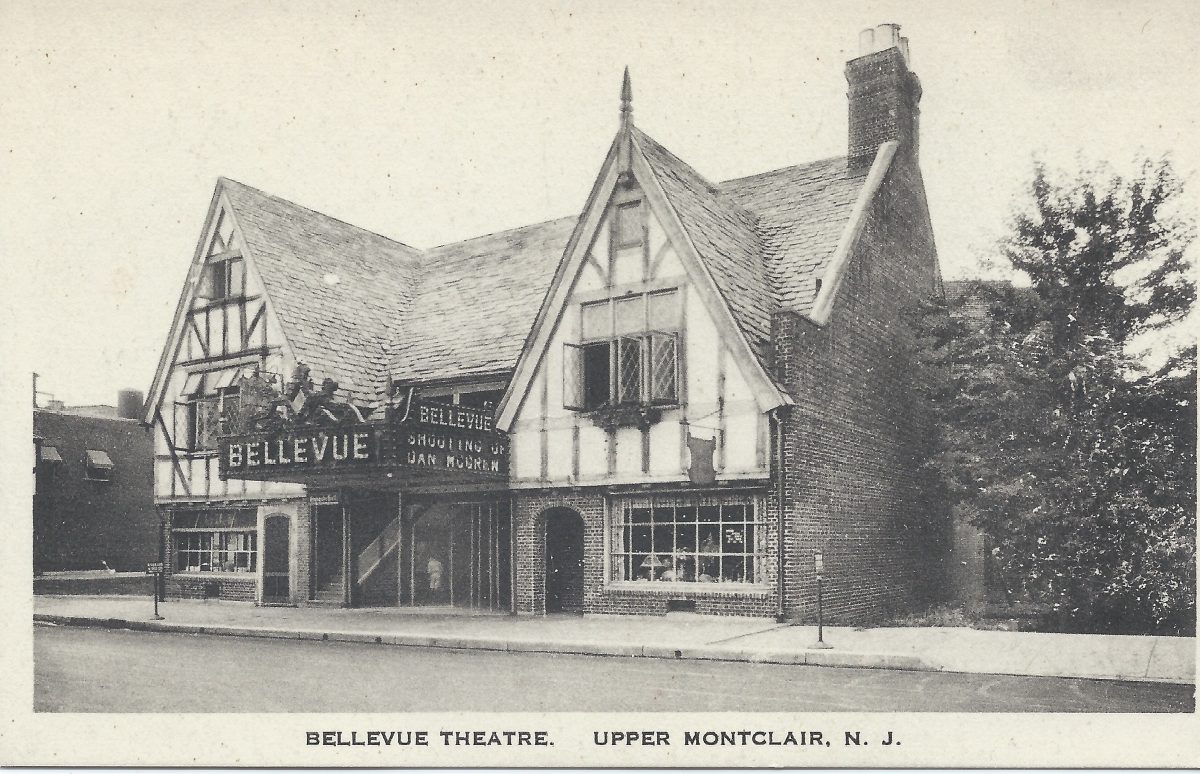
If you look at the marquee, you will see “The Shooting of Dan McGrew” up there, which is a silent movie that came out in 1925. But D.W. Griffith’s was the first film ever shown at the Bellevue. The Bellevue suddenly would shut down in November 2017, creating a vacuum in Montclair. But now there are efforts afoot to restore it as a theatre, restaurant and bar. So, Montclairians love their movies!
The Tudor Post Office
Erected in 1918 “with an eye towards the future” and “as a wonderful and trusted institution,” the design was consistent with post offices across the U.S. at the time that helped establish this style as a hallmark of Upper Montclair’s village. The post office had brickwork, steep rooflines and arched windows that made it look like a house and not a government building.
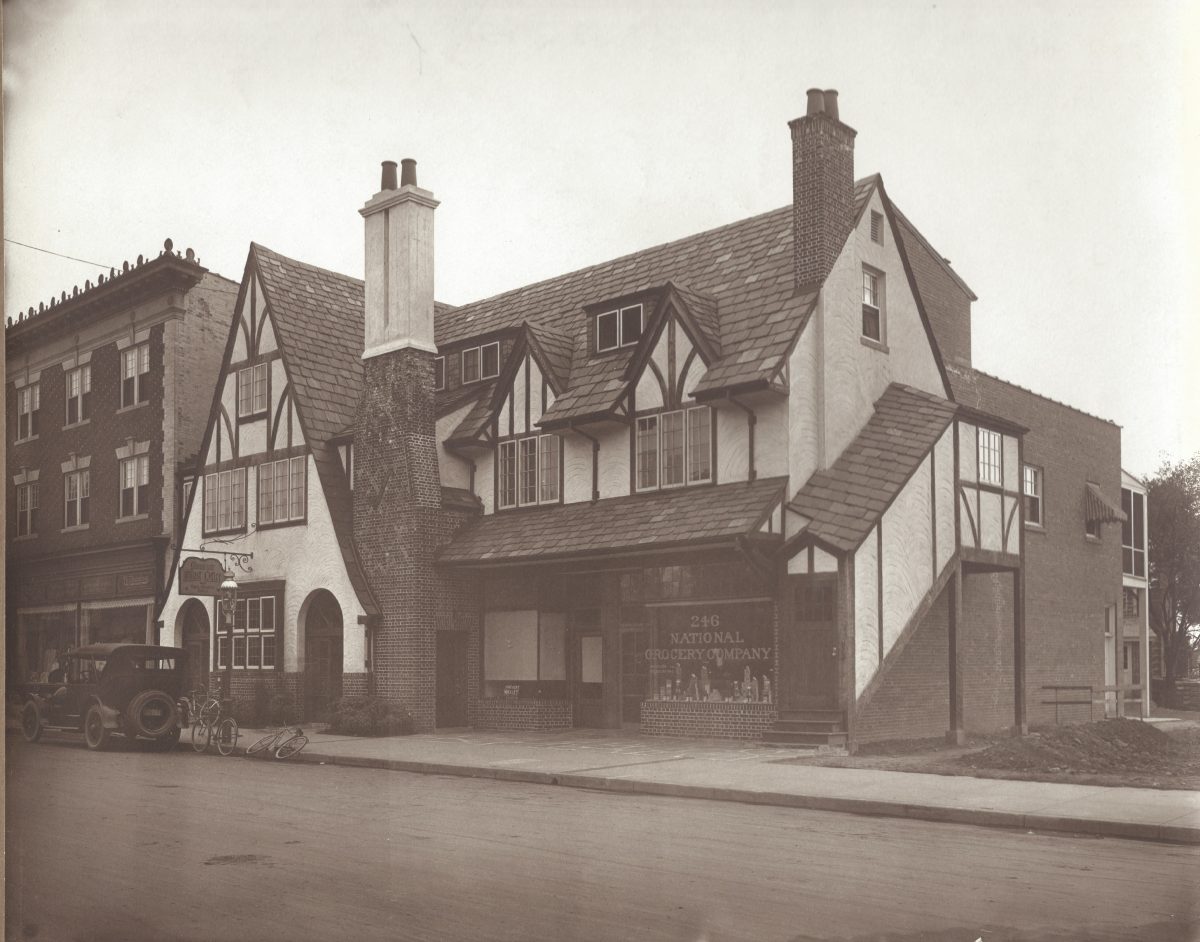
The structure now serves a different purpose, but it remains a historic site marker and Montclair keeps its structure in local register for posterity.
Anderson Family Impact
Standing at the southwest corner of Valley Road and Bellevue Avenue, this stately brick structure tells a layered story. Originally, it housed Jas. B. Fox & Co., a dry goods store, with apartments above for local families. But in 1933, a transformation took place—its street-level façade was redesigned in the Georgian Revival style to accommodate the Montclair Trust Company, a bank that left behind ghost lettering still faintly visible today.
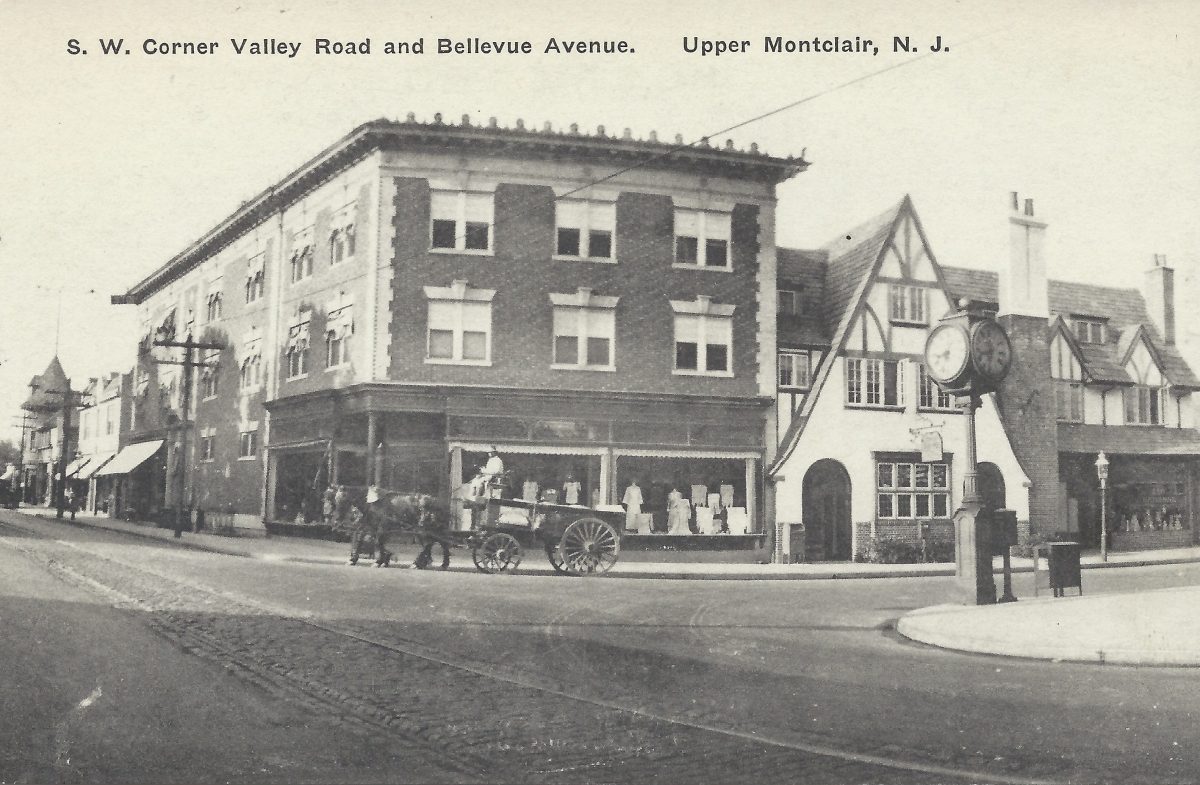
But there’s an even older story hidden beneath this building: the first Upper Montclair school, erected on this site in 1827. The intersection of Valley and Bellevue has been a cornerstone of the community for nearly 200 years, evolving from a place of learning to one of commerce.
A Lasting Tudor Influence
Upper Montclair saw the establishment of establishments like the movie theaters, post office, bank, etc. In Tudor Revival movement which constructed historical continuity as businesses and uses changed over time.
Though the buildings are being changed, they have a special property and craftsmanship. Whether at the movies at the Bellevue, mailing a letter at the post office, or passing the old Anderson corner building, all of Montclair’s history surrounds us and comes alive as we go about our lives in town.
Montclair’s Streetscape: The Grounded Landmarks Yesteryear
Montclair isn’t simply a town. Rather, it’s a collage of eras: from the grand hotels, to the immigrant enclaves, to the churches that were its character. The Montclair Hotel was instrumental in luring travelers, while Pine Street was practically bouncing with Irish and Italian families working to build a life in the Montclair of the future.
Even the First Presbyterian Church, named after that location on Church Street, served as a place to gather as much as to worship. While many things have changed, these places remind us that Montclair has always been on the move, changing and adapting, yet never forgetting its past.
The Montclair Hotel
The Montclair Hotel was built at the southeast corner of Bloomfield Avenue and Valley Road in the 1880s. Before the advent of chain hotels, boutique accommodations, and platforms like Airbnb, The Montclair Hotel which was a grand, three-story structure, stood at the bustling corner of Bloomfield Avenue and Valley Road. The Montclair was not just for sleeping, it was a social place where travelers, professionals and well-known Montclair personalities mingled.
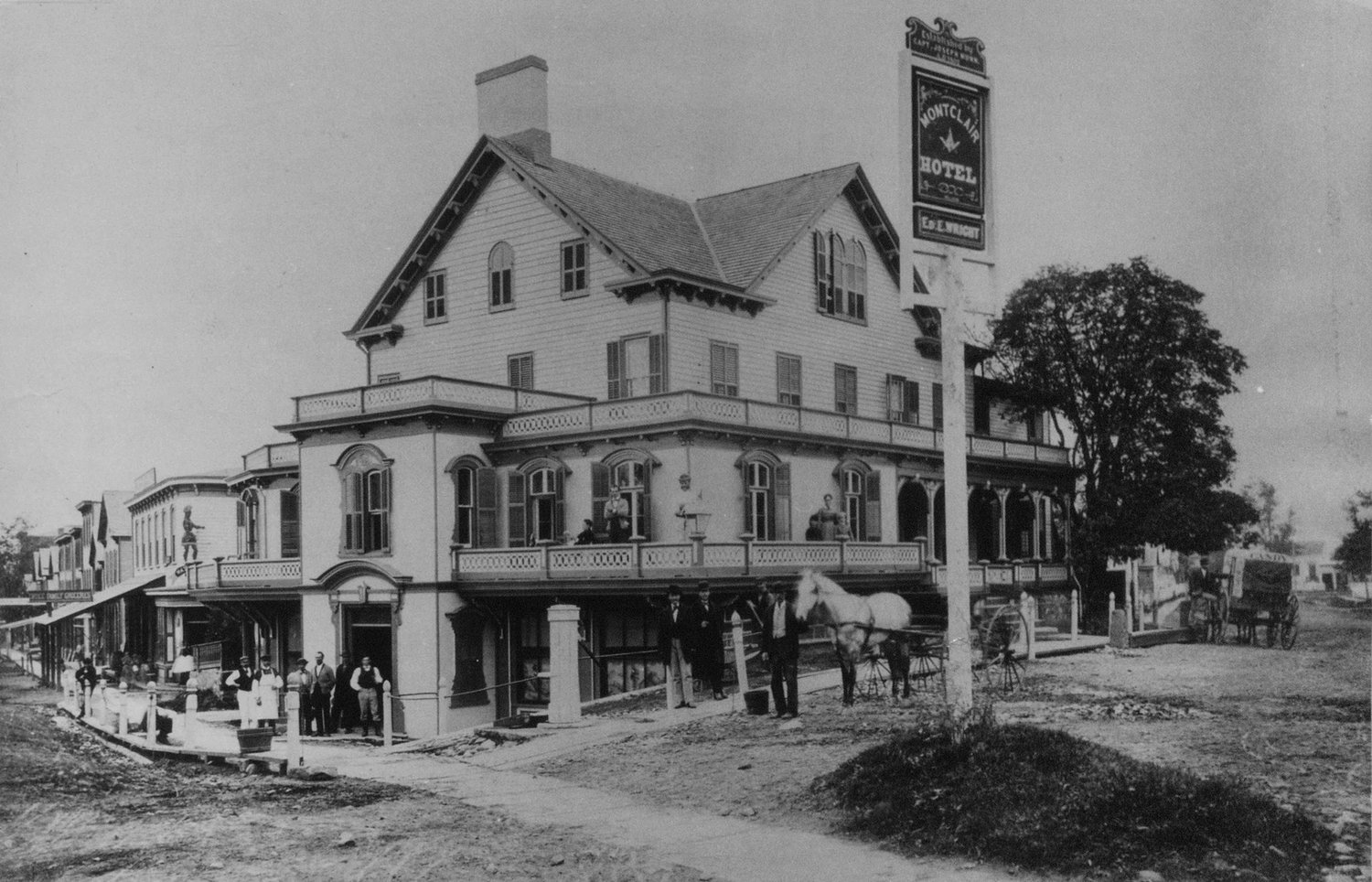
The wooden balconies, massive windows and Victorian detailings are emblematic of a late 19th century style created to impress train passengers. The horse-drawn carriages and unpaved roads at the front serve as a reminder that Montclair was still transitioning from a rural township to a budding suburban center.
Pine Street: The Heart of an Immigrant Community
Pine Street was not just a road, it was a community. In the early twentieth century, this neighborhood was the home of immigrant families, mostly Italian and Irish, who formed the working-class heart of Montclair. Small businesses, bakeries, and markets filled the street, catering to locals as well as commuters.
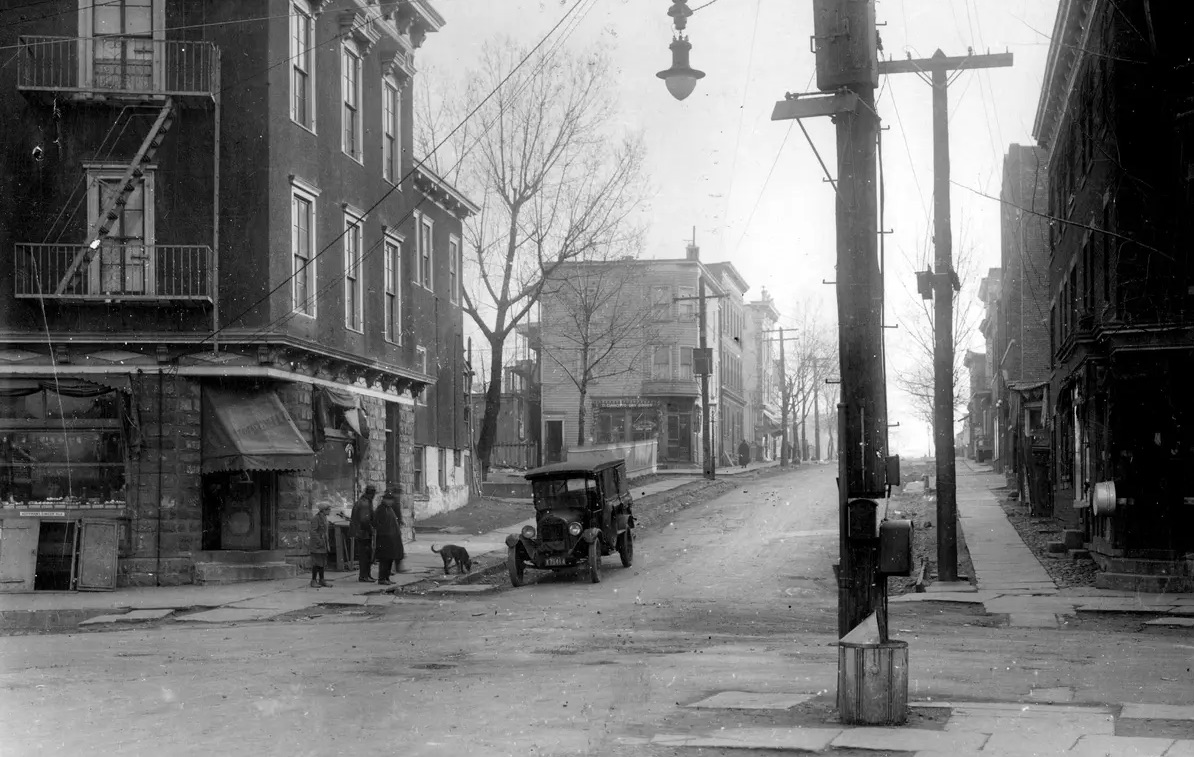
Take a look at the utility poles, crude sidewalks, and early cars. Pine Street today still retains the historic charm with many buildings brought back on their feet as restaurants and shops. Still, it was once an immigrant-focused community.
The First Presbyterian Church on Pioneer Street
Once, the Old First Presbyterian Church was Montclair’s first religious landmark at the junction of Church Street and Bloomfield Avenue. For social gatherings, town meetings, classes and more, it served more than just a place of worship.
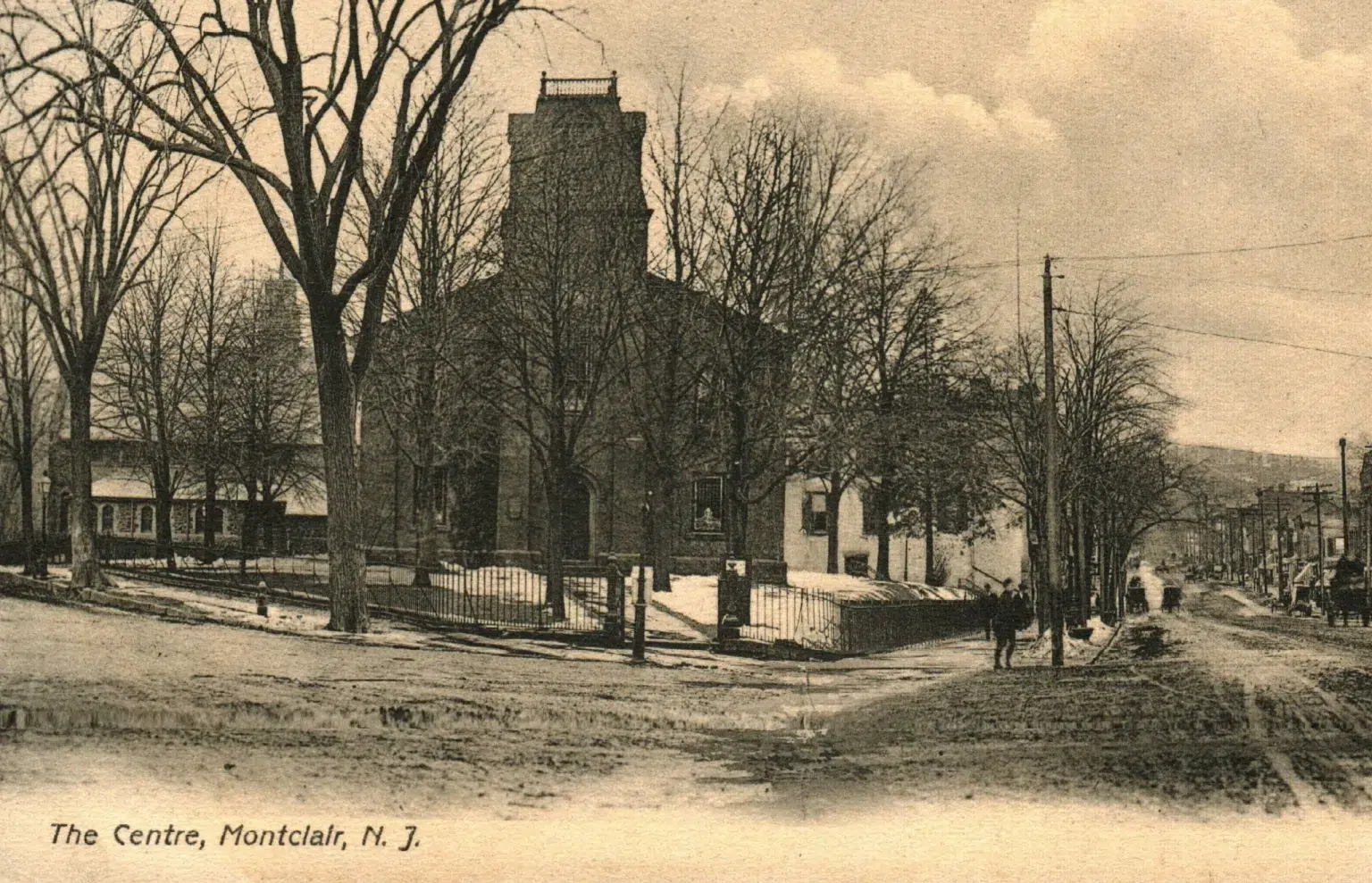
The church had so much influence that its name gave Church Street its very own name, a legacy that lives on despite the tearing down of the original building.
Montclair’s Evolving Identity
All the way from classy hotels to busy immigrant thoroughfares, basic banks to foundational churches were constructions define Montclair. Every structure talks about growth and transformation fo the town. Montclair kept that small-town feel even whilst becoming part of a metropolis.
Montclair’s Bravest: The Evolution of a Firefighting Legacy
Before the blaring of sirens and the flashing of lights, the firefighters of Montclair were in a different (quieter) battle: with horse-drawn wagons, hand-pumped water and more! Fire was not just dangerous, it was a constant threat to a developing town in the late 1800s. Montclair’s first organized defense came with the creation of Hook & Ladder Company No. 1. This wooden firehouse saw citizens offer up their services to batten down the hatches, albeit without training. To keep up with its growth, Montclair went from bucket brigade to motorized engine, from alarm bells to firehouse.
The Birth of a Fire Company
Fire. One of humanity’s oldest adversaries. In the late 1800s, Montclair, New Jersey, experienced fire’s devastating power in a big way. But forgotten are the thousands of volunteer firefighters who battled the flames back then, which wasn’t a job as much as it was a will and endurance test powered by horsepower.
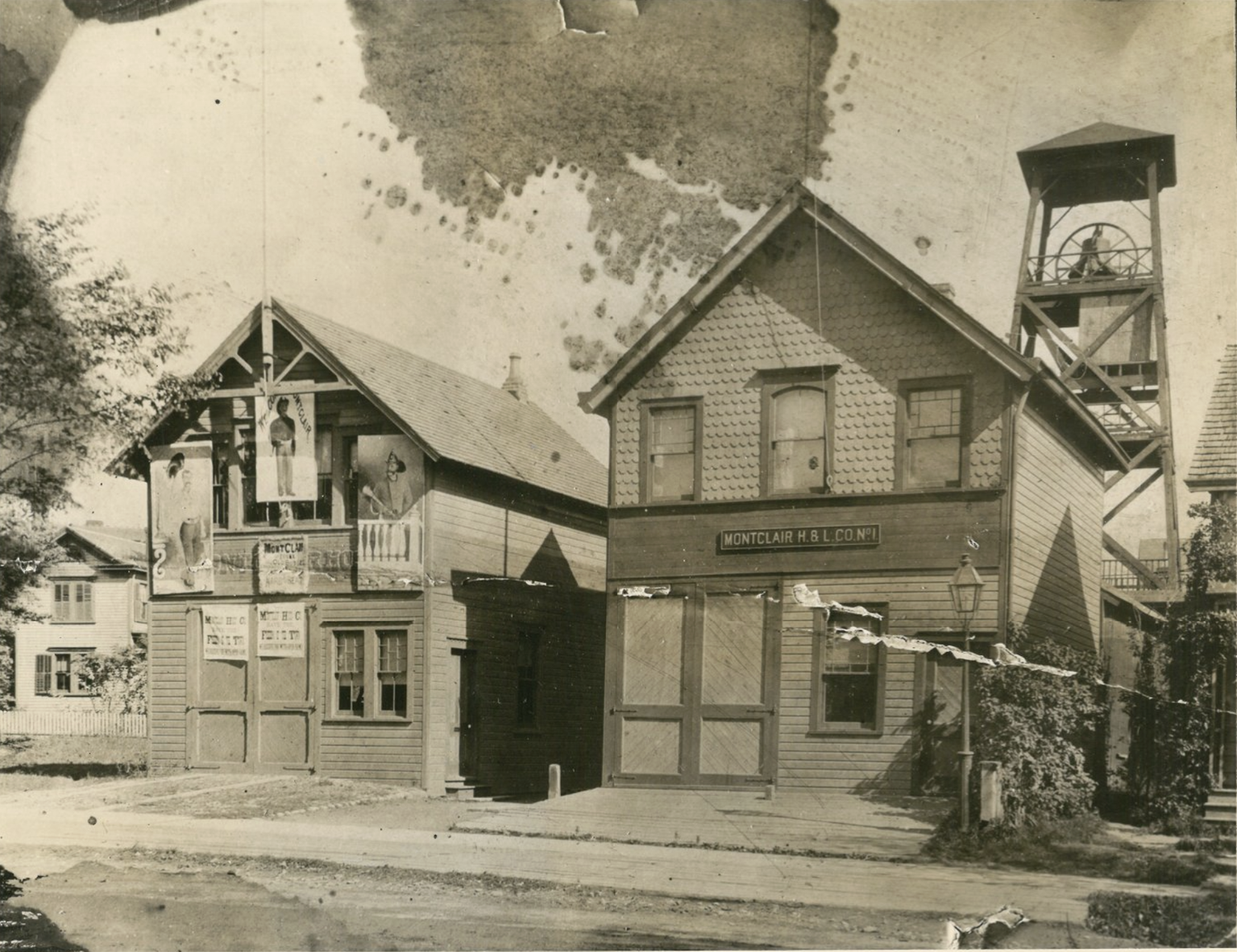
Hook & Ladder Company No. 1 was Montclair’s first firehouse, the town’s first line of defense. With its wooden structure, bell tower where the town’s alarms were announced, and open loft hung with flags, it was the site of Montclair’s first firefighting. The volunteers had no background training but worked for the town. And leading them? C. M. Schott, Jr., a veteran firefighter from Summerville, NJ, who was soon dubbed “the Chief.”
A More Modern Firehouse Emerges
The firehouse was the epitome of elegance, a brick structure constructed in what appears to be the 1920s, if not earlier. By the early 20th century, firefighting was changing. Montclair has grown and so have the hopes for protection. The fire department got rid of the wooden firehouse as a brick, neoclassical-style building took its place on the corner of Valley Road. and Bloomfield Avenue.
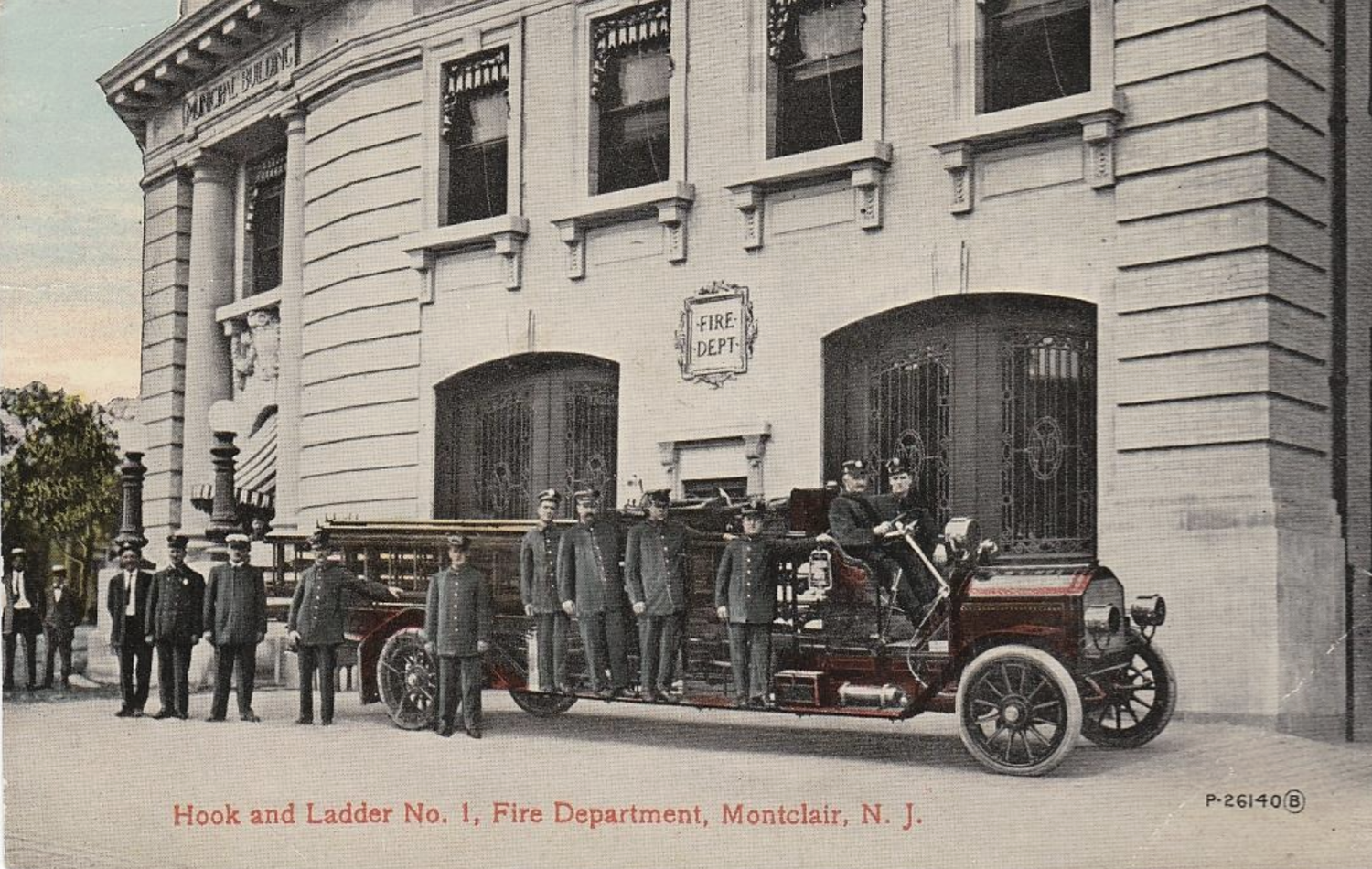
The shift in vehicle was amazing: No more horse-drawn wagon. In their place? A fully motorized fire engine with an extendable ladder on it. The firefighters take pride in their uniforms and posture indicating professionalism and evolution within their domain of the firefighting industry.
The Rise of Volunteer Fire Companies
As Montclair expanded, one firehouse wasn’t enough. Montclair needed extra stations, more equipment, and extra hands ready to fight flames As Montclair’s need for fire-fighting equipment increased, many hose companies were created. Here, Cliffside Hose Company No. 4 is posed in their uniforms in front of their firehouse.
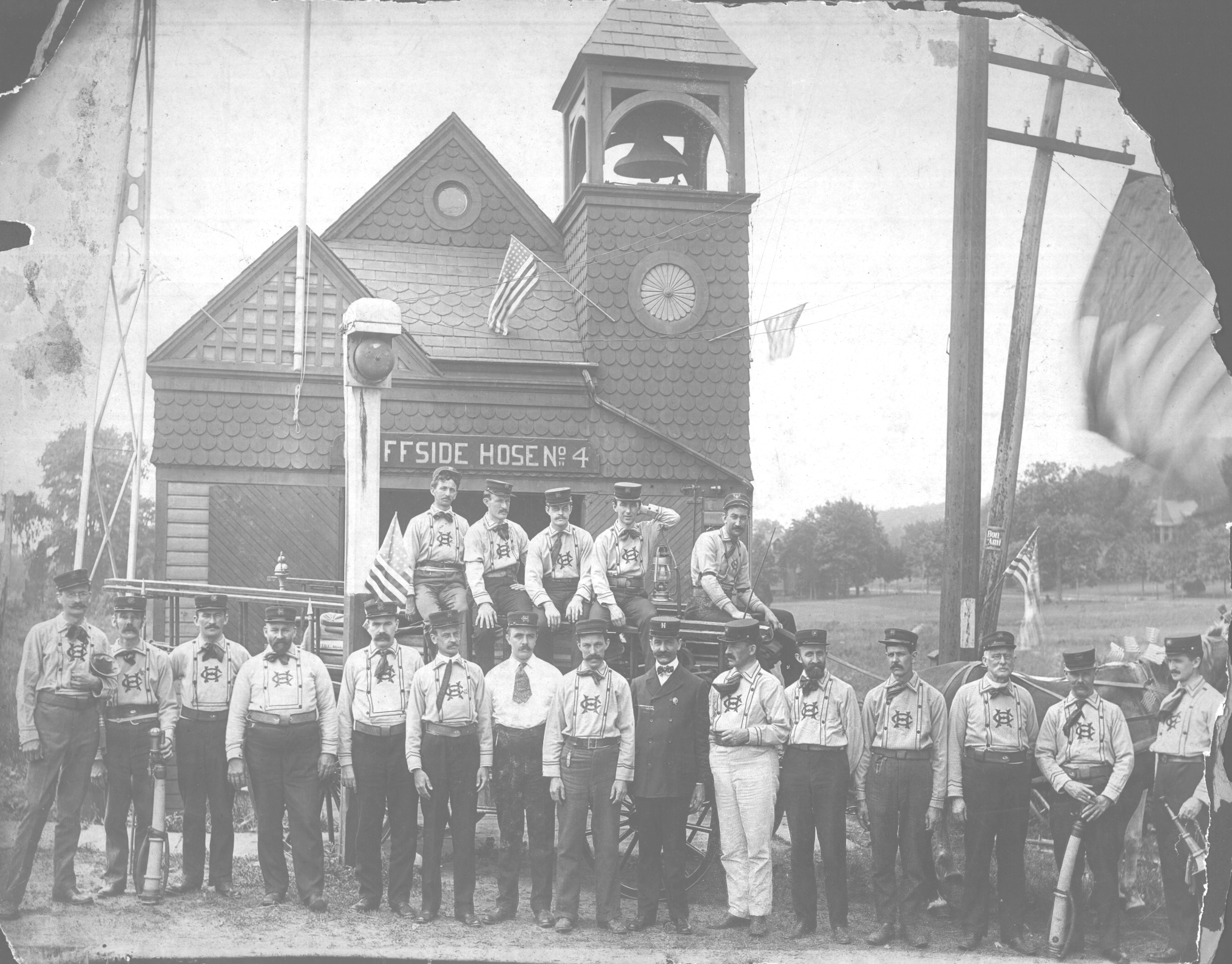
Notice the bell tower? It wasn’t just for decoration. Before sirens and radios, this was the alarm system – a bell to arms. When there was a fire in town, a fireman would rush to the tower and ring the bell to summon volunteers to their stations.
Washington Hose Company No. 3
Hose Company No. 3 had lacked proper fire truck. Note the large arched entrance of the firehouse. Before fire engines, there were fire horses and Montclair’s Washington Hose Company No. 3 had some of the best. Here’s an image of a firefighter team with their horse and hose wagon. These horses were not weak, they were dynamically trained horses who could rush towards fire.
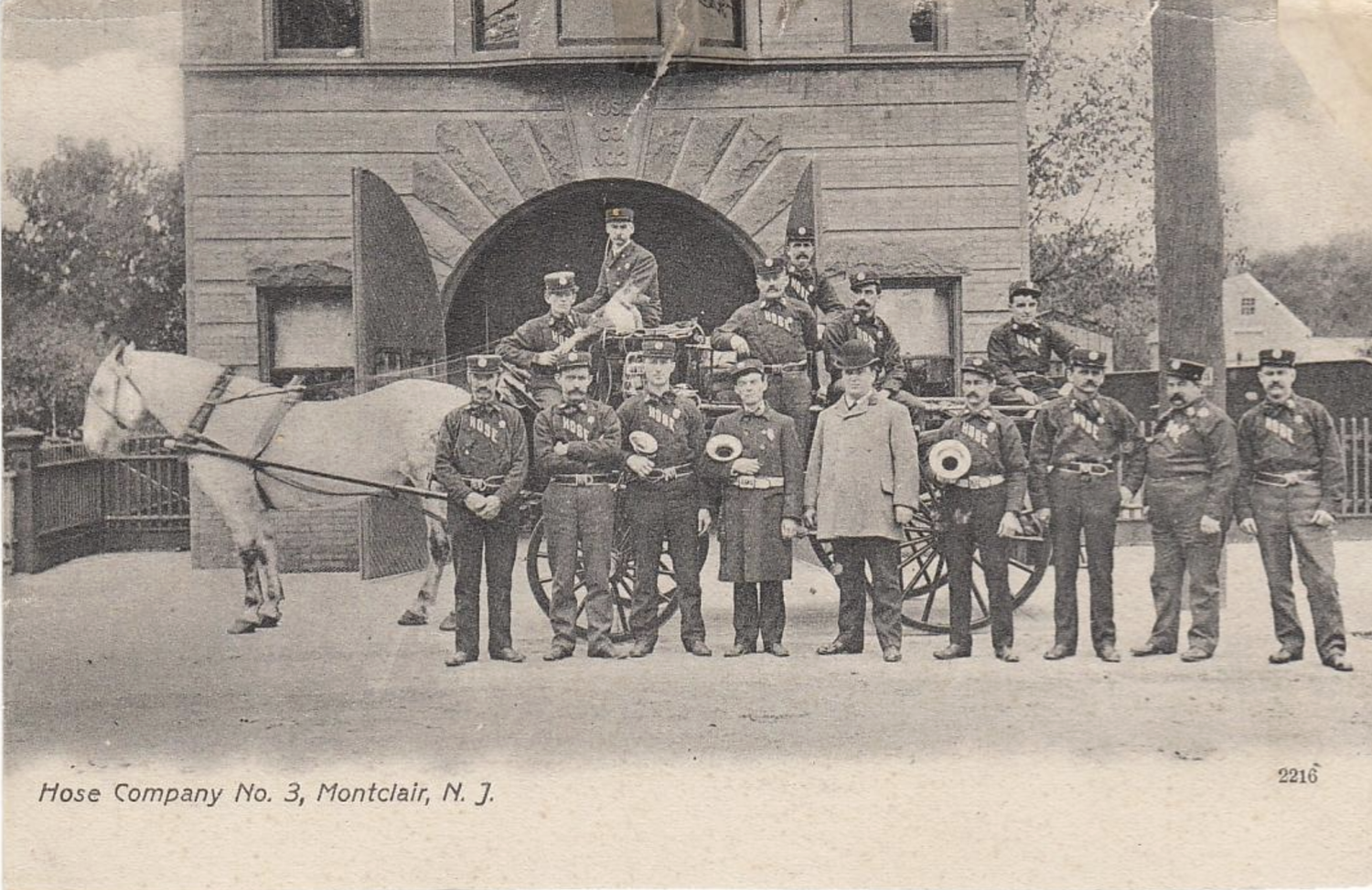
The firehouse was designed for these wagons and teams with arched doorways and stout brick. However, Montclair’s horses would soon be replaced by fire engines in the twentieth century.
Hose Company No. 2: Competing to Put Out Fire
The fire alarm rings. Hooves pound against the dirt road. Firefighters with tall helmets hang on the side of a speeding hose wagon. Hose Company No. 2 is one of Montclair’s busiest volunteer fire stations.
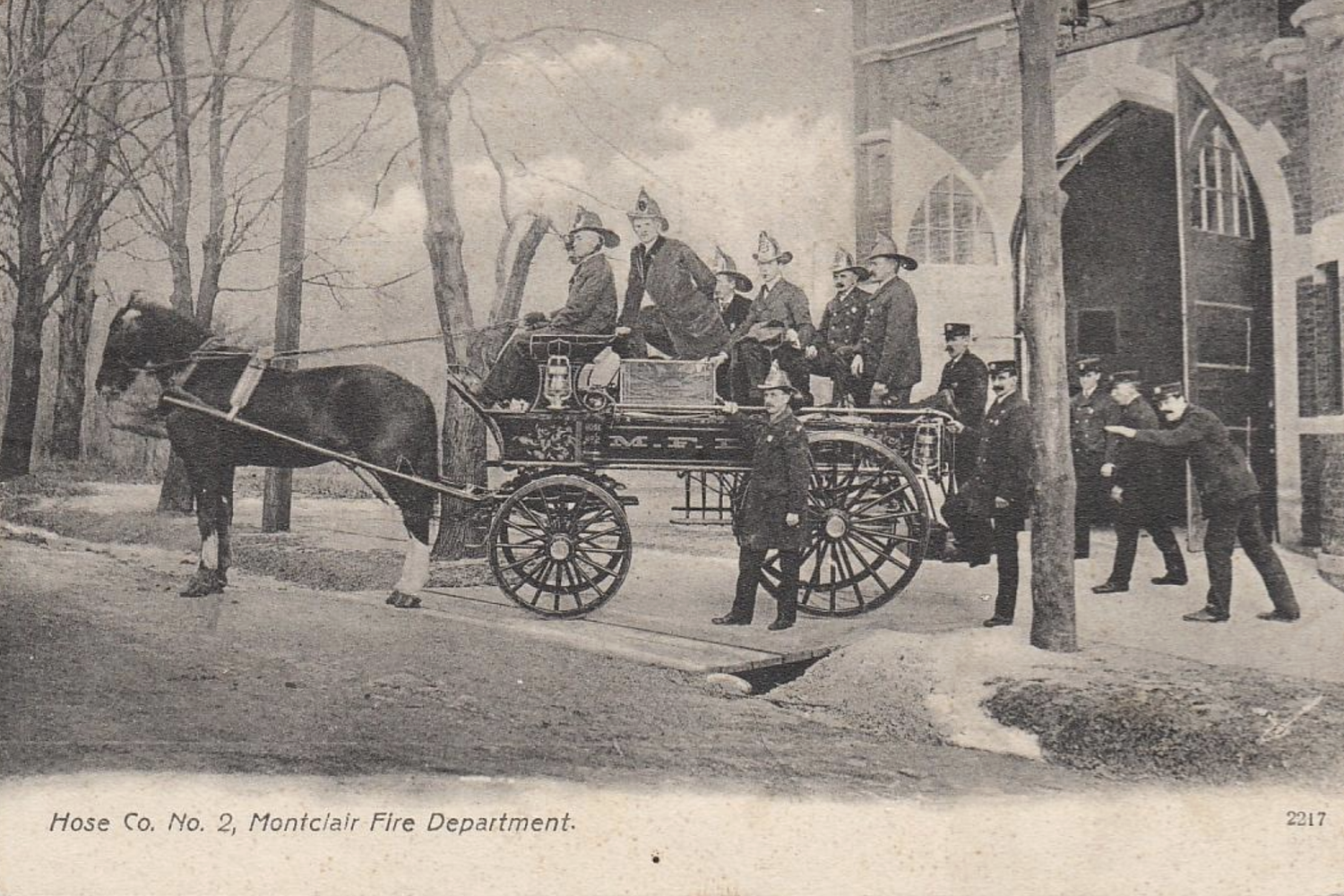
The image shows that this scene is in motion, with firemen already at work, some are clearly pulling, others looking ahead. You can tell by the way they’re standing that every second counted for a fire call. Montclair was dealing with other disasters. One fire. Not one firefighter.
From Bucket Brigades to Fire Engines
These firehouses were symbols of progress, not just a building. In the early days firemen used hand pump water, horse drawn wagons and grit. By the early 1900s, motorized fire engines became the new thing. A new Hook and Ladder station has been set up with a fully mechanized fire that emerging Montclair’s firefighting gear.
Montclair has a well-staffed, fully trained fire department these days. The story about the origins of Montclair’s fire department is worth mentioning. The 19th-century volunteers contributed towards the modern department that has wooden ladders, bucket brigades, and a chief who refused to let fire win.
When the fire truck’s siren sounds in Montclair, it is more than just a mere emergency signal to the fire personnel. It’s the echo of over a century of bravery.
Montclair’s Railway Evolution: The Tracks That Built a Town
Many moons ago, before highways were even a thing and the Parkway and Turnpike became an integral part of the daily grind, Montclair’s link to the rest of the world, was via steel rails and steam. The original train station was a little wooden building with a platform that overhang which actually served as a stop. By the late 1800s, the railroad and Montclair got the township’s value up from sleepy and sylvan to suburban, pulling it closer to New York and attracting wealthy Manhattanites to escape to Montclair. With every train arrival and departure, Montclair began to change from a rural township to an integral part of the region’s growing commuter network.
Montclair’s Early Train Station
Long ago – before highways spread across new jersey, before the rush hour meant crawling in bumper-to-bumper traffic, montclair connected to the outside world using steel rails and the power of steam. A lifeline was the early modern Montclair train station with a wooden structure, overhanging platform, and a simple sign a train stop more than one.
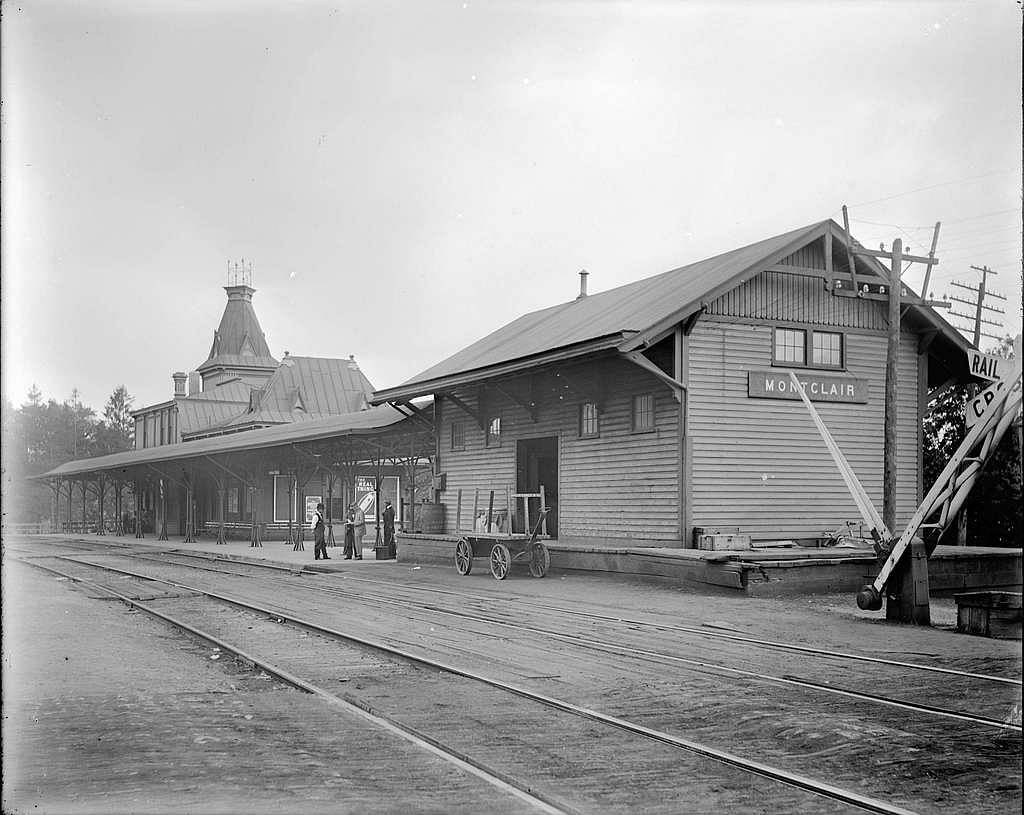
By the end of the 19th century, railroads would turn Montclair from a quiet township into a busy suburb. New York became an instant reality, and rich folks from the city saw Montclair as the ideal spot for erecting mansions while keeping their foothold in Manhattan’s commercial world.
The Steam Engine Trains
Check out this train—its strong metal frame cutting a path through the countryside, while a thick plume of smoke follows behind. This machine signified more than just a mechanical object; it was progress.
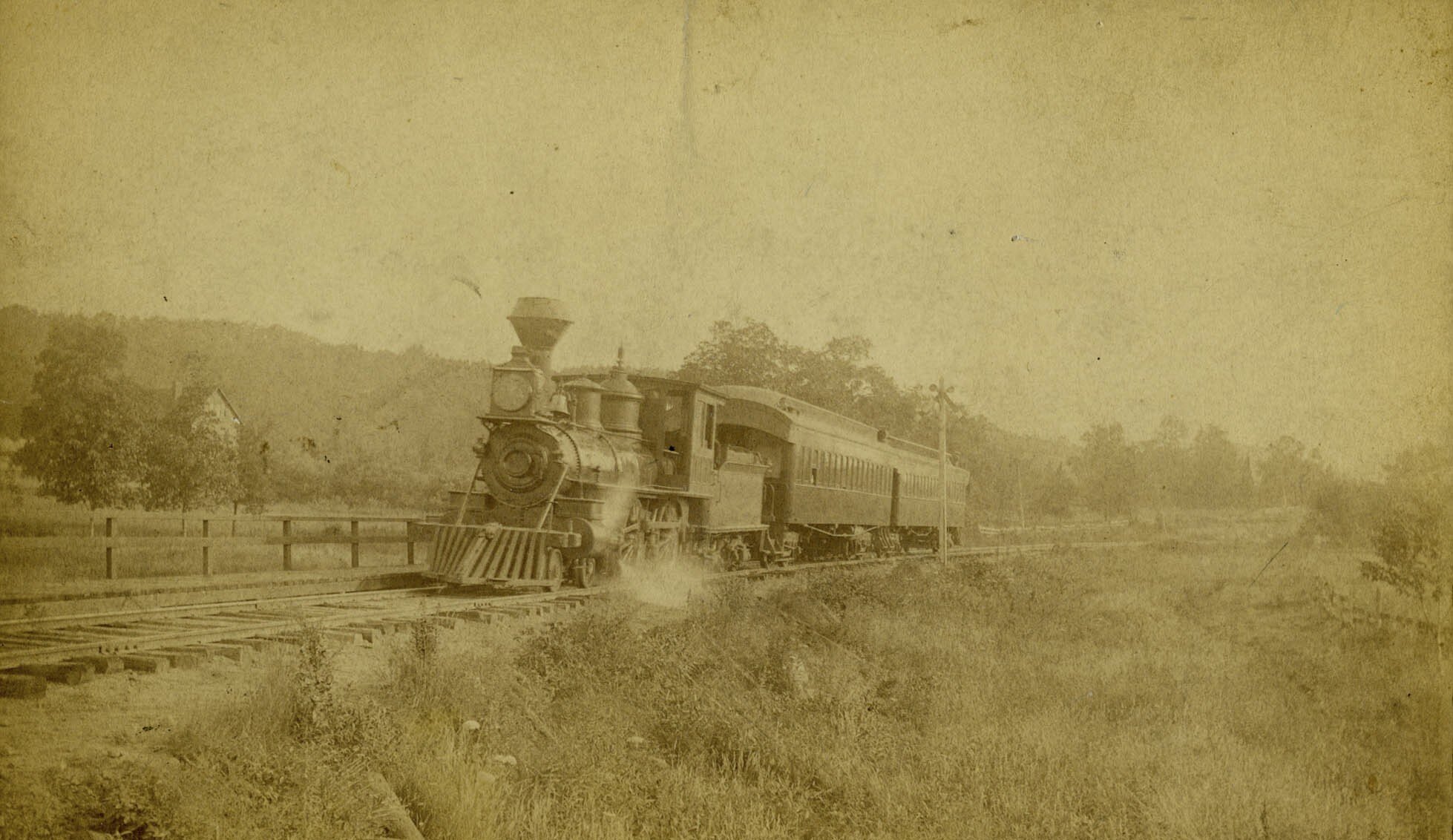
In the 1800s, travel was slow, tiring and uncomfortable if you were poor. But then came the railroads. By the late 1800s, machines like these could drastically reduce travel time and allow people to reach Montclair, Newark, Hoboken, and beyond. Out of the blue, the settlement was no longer far removed from a city—but part of one. But to upgrade Montclair to a fully-fledged township, they needed better train stations.
Mountain Avenue Conveniences
The Mountain Avenue Station is an excellent example of an early rustic train station built to blend into the suburban environment. At its opening, it was considered a significant improvement over the heavy industrial stations of the time.
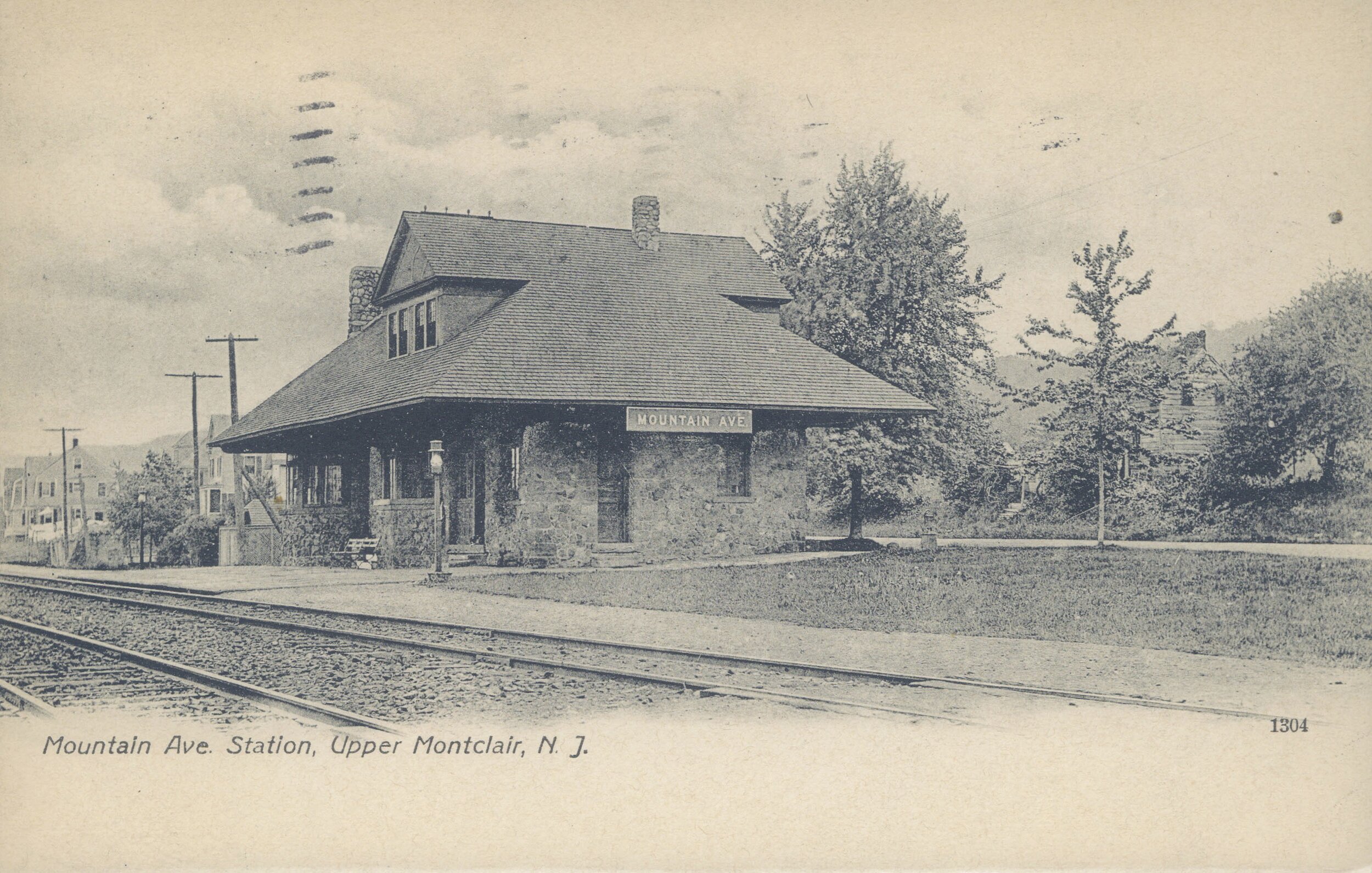
To help accommodate the tremendous population growth in Montclair, stations like this served local travelers heading into the city while welcoming those from afar. Mountain Avenue was much less imposing than other stations in the area; it was rather an intimate place, reflecting the charm of Upper Montclair.
The Famous Lackawanna Station
Then was the Lackawanna Station—the game changer in Montclair. Launched in 1912, this station is an architectural marvel of brick and stone with fine arches and a large covered platform.
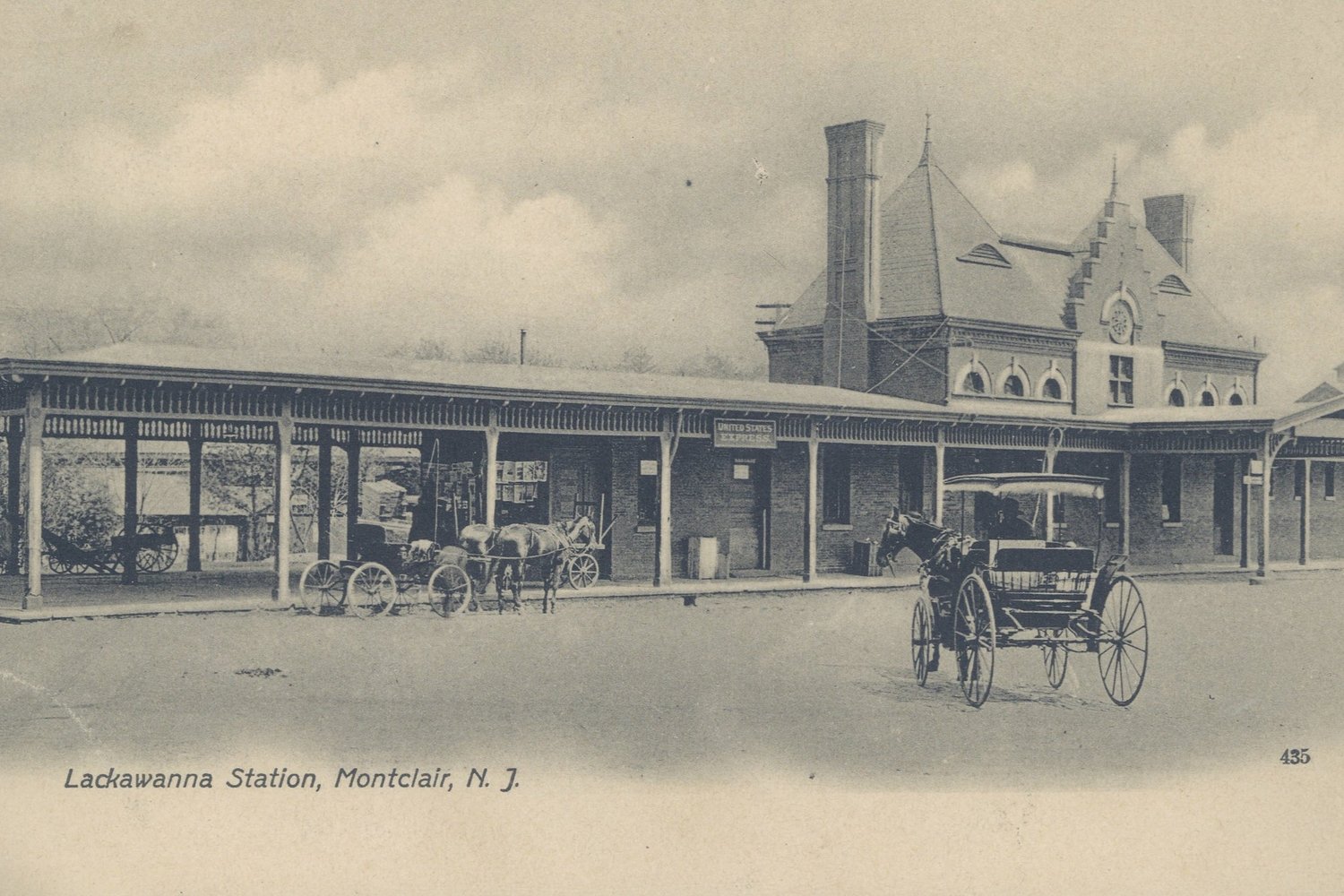
Commuting became part of the daily routine for thousands of Montclair residents around this time. The Lackawanna Terminal wasn’t just a train stop—it was a statement. A place where business people, families and visitors could get off the train and into the modern era.
No longer was it just a matter of traveling from A to B. It was about efficiency, elegance, and urban expansion.
The Legacy of Montclair’s Rails
Montclair railroad stations history meaningful design change from wooden platform to brick terminal. Montclair’s three railroad stations reveal their live story of life and transportation projecting significance a lot more than what may be imagined.
Even today, thousands of passengers ride the Montclair train system every day but as each train pulls in at a station, it has the same spirit as the steam engines, iron rails and those early visionaries who made a town with movement.
The Architectural and Cultural Landmarks of Montclair
Montclair’s streets evolved, but the history lingers in its architecture, street names, and public spaces. As you walk north along Fullerton Avenue past the impressive spire of the Immaculate Conception Church, picturing the gas lamps illuminating the brick sidewalks and streetcars rattling by the Mansion House hotel isn’t that difficult. The parks were once filled with children having fun and splashing about in the pond at Glenfield Park on hot summer days. Likewise, the theaters, including the much-loved Montclair Theatre, filled with laughter as vaudevillian acts took to the stage before the movies moved in with the silent films. Montclair may have lost some landmark, but the soul is there in the streets, the marquees and the buildings.
North Fullerton Avenue
The streets of Montclair have shifted in the course of decades but landmarks have not. Check out this old postcard showing North Fullerton Avenue, Montclair. The fancy red brick building that has striped awnings isn’t there today but in the background the spire to Immaculate Conception Church still stands, documenter of Montclair growth.
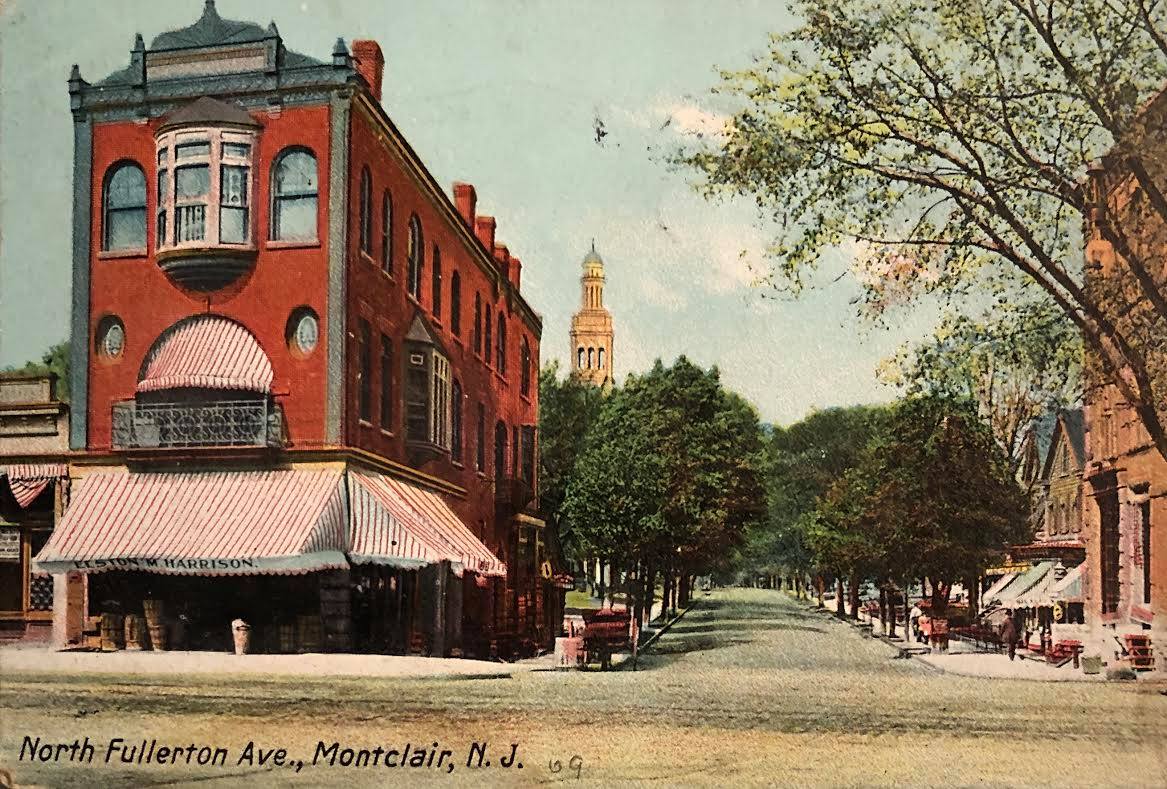
The street name came with the borough designation in 1894, so it probably looked even more special back then as Montclair shifted from town to suburb as a major streetcar destination. But look closely, it has gas lamps and brick sidewalks already! Other than the telephone posts, a lot of this is still there today, just under heavy use.
The Wading Pond at Glenfield Park
A century ago, when pools and water parks were not yet a thing, Montclair’s kids went to Glenfield Park’s Wading Pond to cool off in hot, summer weather. In this postcard, kids are seen wading through shallow waters while families gather under the pavilion.
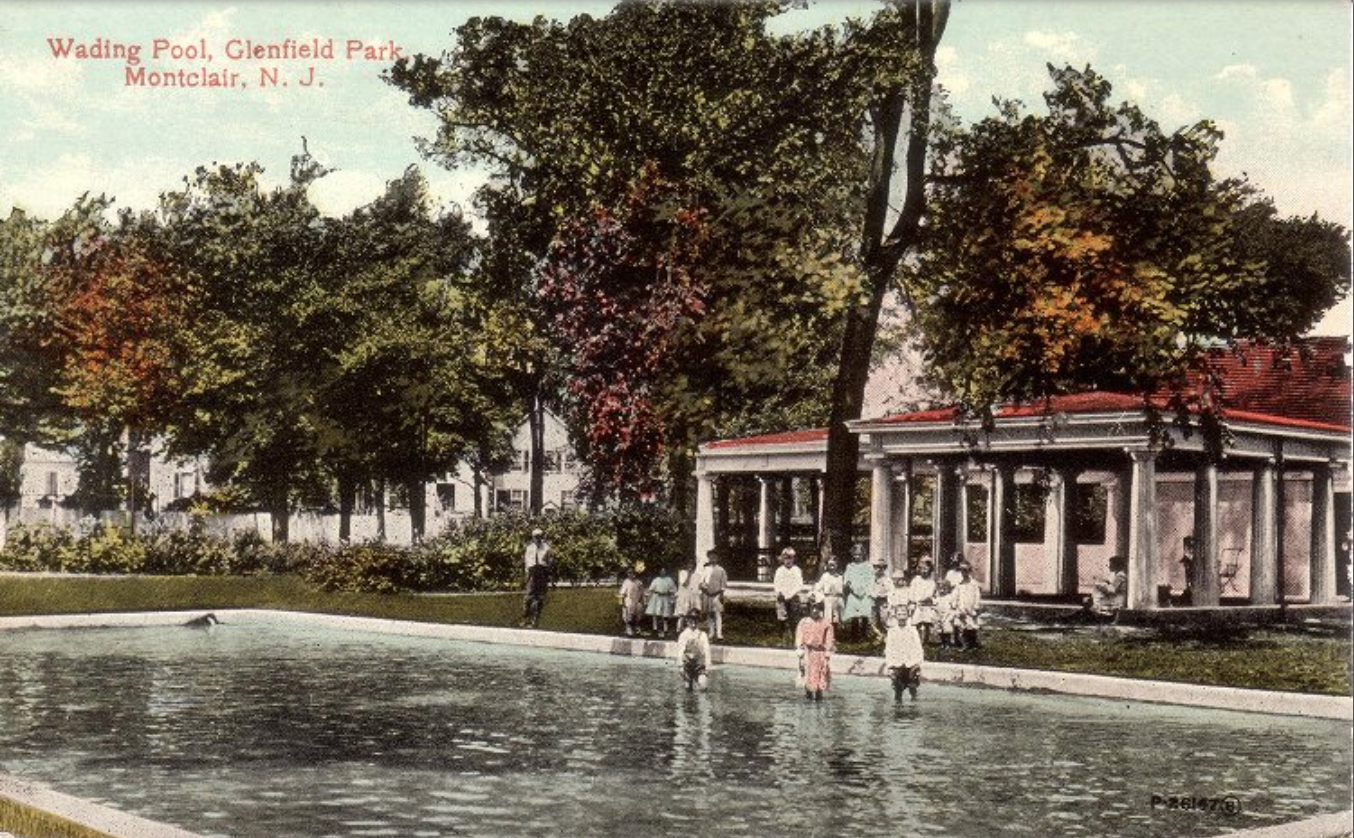
Long before we had community swimming pools and water parks, children escaped the heat by wading in Glenfield Park’s Wading Pond. Looking at this colorized postcard, you see kids wading in the water with families relaxing under the pavilion.
The Bloomfield Avenue Grand Hotel
Mansion House was one of the most prominent lodging options in Montclair at the end of the 19th and early 20th century, before skyscraper hotels and boutique stays. Mansion House opened its doors to travelers, businessmen, and socialites on Bloomfield Avenue, near today’s MC Hotel.
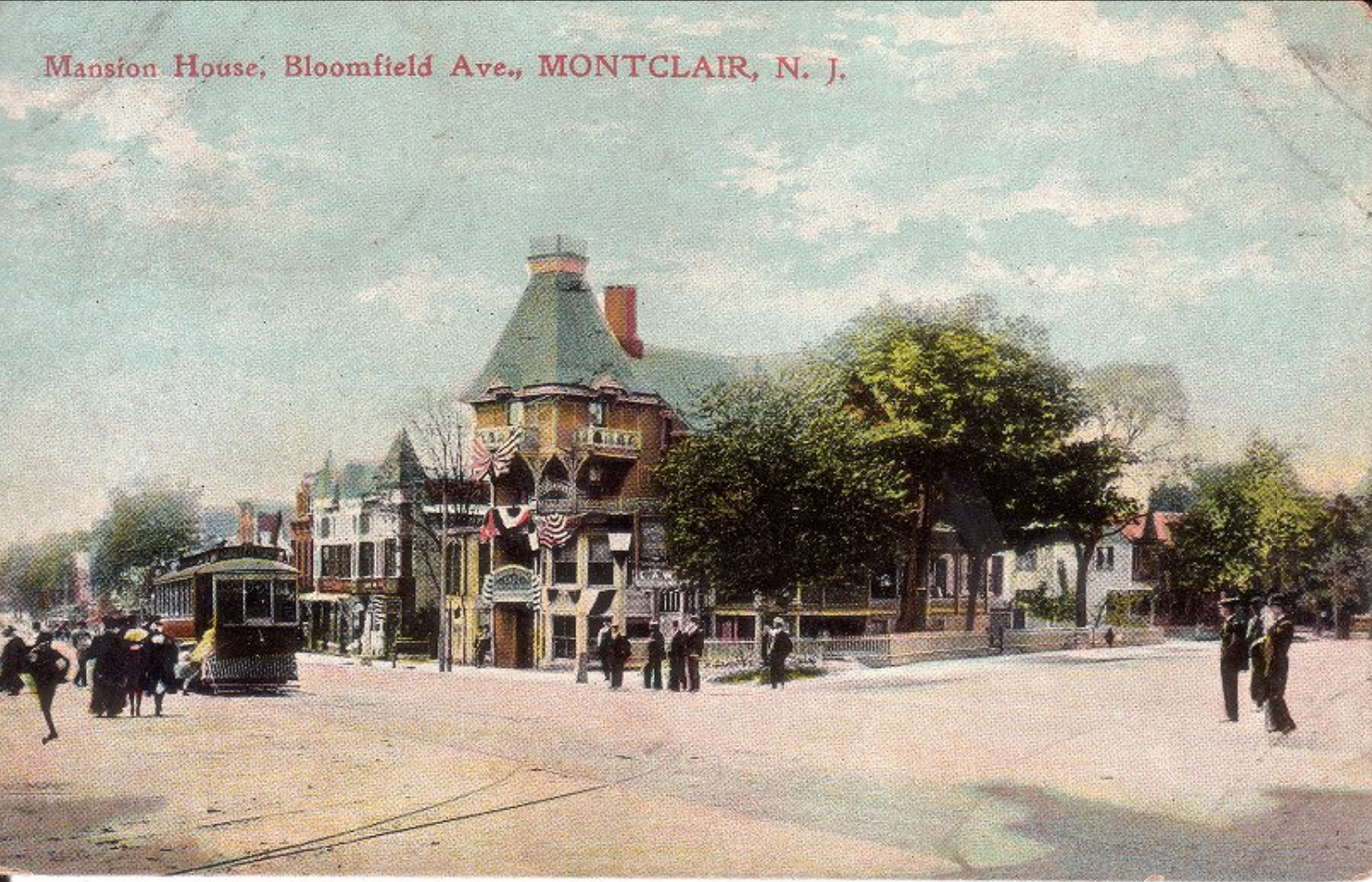
See that trolley in the front? The streetcars once ran along Bloomfield Avenue to Newark, and further onto NYC! The American flags hanging on the hotel entrance suggest this photo was taken during a national occasion.
The Montclair Theatre
Back in the early 1900s, you were missing out if you didn’t hit the Montclair Theatre for a night out. This magnificent building struck a chord with the residents of Montclair. With its protruding arches and immaculate detailing, the Montclair Theatre was a destination beloved by many. It housed vaudeville performances and other intelligent performances and finally turned into a cinema where people could enjoy their silent feature films.
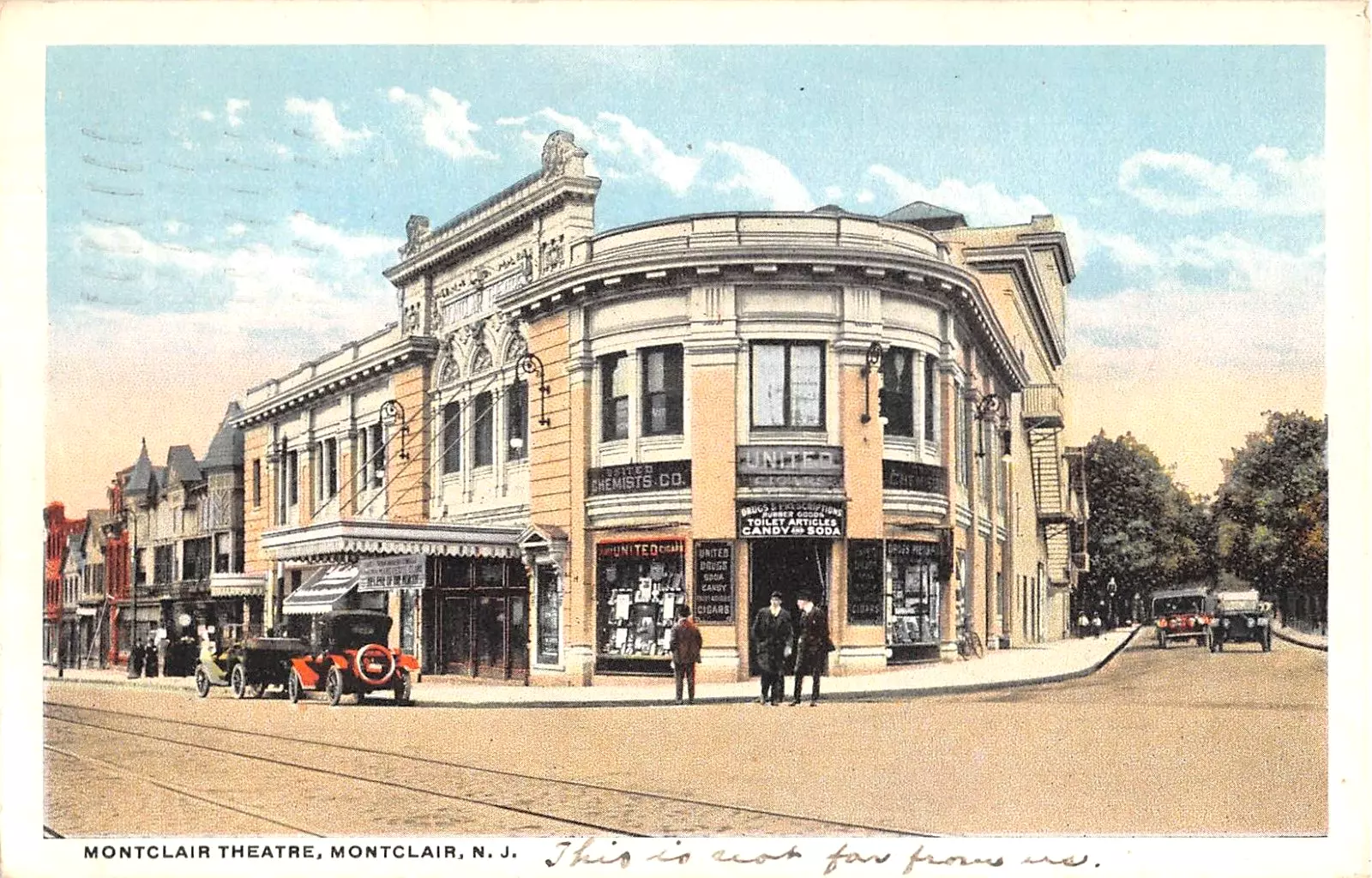
As Montclair grew, so did its appetite for culture. This theatre, next to shops, druggists, and restaurants, was a major player in the boom Montclair’s cinema and live performance. While the original building may have disappeared, Montclair still loves theatre, with venues like the Wellmont Theater.
Montclair’s Streets are Frozen in Time
The photos of Montclair important news give a look at a town constantly changing. Every place, be it a big hotel, entertainment hub, park, street corner, has a story to tell.
Montclair is well-known for balancing the old with the new to this day. And yet, even as the buildings changed, the spirit of the town, its love for community, culture and connection, remains unmistakably the same.
Beautiful Historic Montclair
Even with the growth of Montclair, apparatuses are still in use and helping the people. Just like our downtown post office, the Lackawanna Station, Montclair Theatre, and more, these architectural styles are not just a pretty façade; they hark back to when our town emerged during the late 18th and early 19th centuries. Montclair’s charm lives on, whether it’s a firehouse bell that once summoned the volunteers, a wading pond where youngsters cooled off, or the spire of a church that has kept an eye on the town through the ages. As we move through the community, we are not just passing by buildings, but passing through history that changes daily, which each tells a different story.







